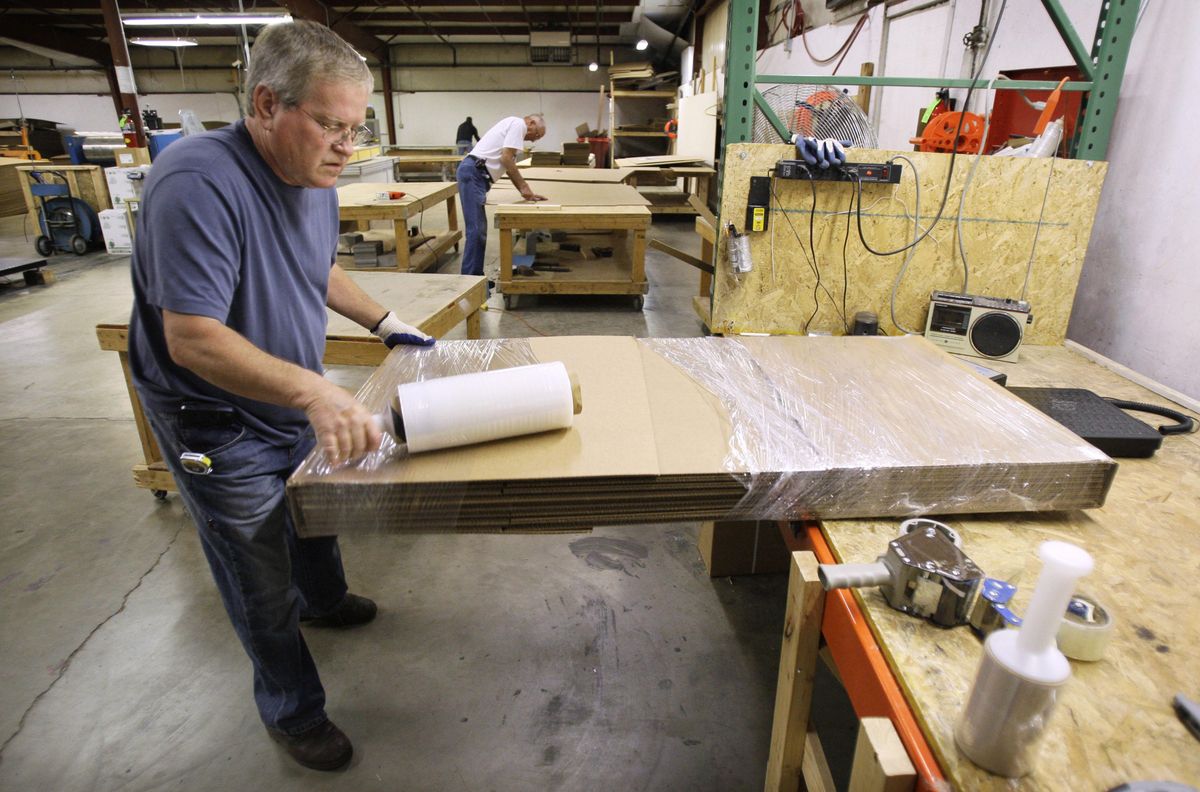Uncontained prices
The common box is getting expensive

NEW YORK – Erin Stein, a HarperCollins executive editor, moved earlier this year from one part of Brooklyn to another, and one thing she and her husband left behind forever was paying “outrageous” prices for cardboard boxes.
“We needed about 30 book boxes,” she said of her July move. “So we walked into Staples and we were like, ‘We’re not paying that.’ ”
While Staples declined to comment on its box prices, a recent check of its Web site showed a set of three boxes suitable for books listed at $12.99, which would bring the cost of 30 boxes to $129.90.
Here’s the reason box prices are causing sticker shock: The cost of containerboard, the material cardboard boxes are made of, has been soaring. From the summer of 2005 to the summer of 2008, prices jumped more than 50 percent as the industry consolidated and cut capacity, reducing supplies and pushing prices higher.
The latest containerboard price hike came this month and follows closely on the heels of a July increase of $55 per ton, to about $560. That move translated into roughly a 12 percent price hike for companies that buy containerboard to make cardboard boxes. This month containerboard producers have been trying to lift prices again, this time by about $60 per ton.
Moishe’s Moving and Storage, a New York City moving company that sells boxes to the public, said it had a 12 percent box price hike in June and another 12 percent increase in August. That contrasts with all of 2007 when Moishe’s had just one price increase, also of 12 percent.
In an effort to find alternatives for customers, Moishe’s is starting a Web-based box exchange service for finding people with boxes to sell or give away. Others have taken similar steps including U-Haul, which began an online box exchange in the summer of 2007.
Meanwhile, small, privately held companies that buy containerboard to make cardboard boxes have to make the tough call of deciding how much of the cost to pass along.
Mike Wilkinson, president of Des Moines, Iowa-based Custom Made Boxes, which makes cardboard boxes in both stock and custom sizes, buys his containerboard from privately held Georgia-Pacific LLC. On Aug. 1, after a 30-day notice, he absorbed most of an 11.5 percent price increase, choosing not to pass along the full amount to retailers who use boxes.
Instead, he raised his prices by only 2.75 percent.
“People are going to comparison shop more, and when they come to me they’ll see that I’m not following suit, they may switch to me,” Wilkinson said. “They’ll see that I’m still making my boxes a viable option.”
Not all cardboard box makers absorb higher containerboard costs. Dean Timmons, general manager of Middletown, Ohio-based Argrov Box, said he intends to pass the entirety of price hikes along to customers such as retailers.
“Businesses over the last few years have been streamlining and cutting costs and now – whether it’s oil or health insurance – you have to look at ways to cut,” he said. “But when you look at paper prices there’s nothing left to cut. You have to pass those price hikes along.”
In Los Angeles, Aroma Cafe Culture, which had a box price hike of as much as 20 percent in July, is finding another way to save money. The online specialty coffee retailer is cutting costs by better aligning the number of boxes ordered with the number of boxes actually used. In some cases, that means switching to a vendor willing to sell fewer boxes.
Don’t wait for cardboard box prices to level out or fall. Containerboard producers want to make sure they don’t go back to the situation of earlier this decade when they couldn’t make money off cardboard.
International Paper Co., which has about a third of the U.S. containerboard market, recently said it would halt production for at least three months at a big plant in Albany, Ore. The news came as IP and other makers of containerboard sought higher prices for the material.
For her part, Stein gave up on buying boxes from any retailer. Instead, she brought used boxes home from her job and found others on the street.
“We’re not going to pay outrageous prices for boxes,” she said.